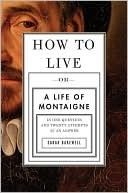More on this book
Community
Kindle Notes & Highlights
Started reading
May 2, 2025
THE TWENTY-FIRST CENTURY is full of people who are full of themselves. A half-hour’s trawl through the online ocean of blogs, tweets, tubes, spaces, faces, pages, and pods brings up thousands of individuals fascinated by their own personalities and shouting for attention.
The historian Theodore Zeldin has founded a site called “The Oxford Muse,” which encourages people to put together brief self-portraits in words, describing their everyday lives and the things they have learned. They upload these for other people to read and respond to. For Zeldin, shared self-revelation is the best way to develop trust and cooperation around the planet, replacing national stereotypes with real people. The great adventure of our epoch, he says, is “to discover who inhabits the world, one individual at a time.” The “Oxford Muse” is thus full of personal essays or interviews
what they share with everyone else: the experience of being human. This idea—writing about oneself to create a mirror in which other people recognize their own humanity—has not existed forever. It had to be invented. And, unlike many cultural inventions, it can be traced to a single person: Michel Eyquem de Montaigne, a nobleman, government official, and winegrower who lived in the Périgord area of southwestern France from 1533 to 1592.
collection run to over a thousand pages. They rarely offer to explain or teach anything. Montaigne presents himself as someone who jotted down whatever was going through his head when he picked up his pen, capturing encounters and states of mind as they happened. He used these experiences as the basis for asking himself questions, above all the big question that fascinated him as it did many of his contemporaries. Although it is not quite grammatical in English, it can be phrased in three simple words: “How to live?”
This is not the same as the ethical question, “How should one live?” Moral dilemmas interested Montaigne, but he was less interested in what people ought to do than in what they actually did.
Exploring such phenomena over twenty years, Montaigne questioned himself again and again, and built up a picture of himself—a self-portrait in constant motion, so vivid that it practically gets up off the page and sits down next to you to read over your shoulder.
But for Montaigne it represented the burden of duty. On the estate, someone was always plucking at his sleeve, wanting something or finding fault with things he had done. He was the seigneur: everything came back to him.
In dying, he now realized, you do not encounter death at all, for you are gone before it gets there. You die in the same way that you fall asleep: by drifting away. If other people try to pull you back, you hear their voices on “the edges of the soul.” Your existence is attached by a thread; it rests only on the tip of your lips, as he put it. Dying is not an action that can be prepared for.
From now on, when Montaigne read about death, he would show less interest in the exemplary ends of the great philosophers, and more in those of ordinary people, especially those whose deaths took place in a state of “enfeeblement and stupor.”
“Don’t worry about death” became his most fundamental, most liberating answer to the question of how to live. It made it possible to do just that: live.
But life is more difficult than death; instead of passive surrender, it takes attention and management. It can also be more painful.


